Getting Started with SCALE 5.1 / ORIGEN-ARP 5.1
for Windows XP and Vista
Revised August 2007
Table of Contents
1.
2.
3.
4.
5.
6.
7.
8.
9.
Introduction ______________________________________________________________ 2
Computer Hardware Requirements ___________________________________________ 2
Installation of SCALE______________________________________________________ 3
Information for Foreign Language Windows Users ______________________________ 5
How to Run SCALE _______________________________________________________ 7
Running and Verifying the SCALE Sample Problems ____________________________ 9
How SCALE Works_______________________________________________________ 10
SCALE Manual __________________________________________________________ 11
SCALE Graphical Interfaces and Visualization Tools for Windows ________________ 11
GeeWiz User Interface __________________________________________________________ 11
Keno3D _______________________________________________________________________ 11
KENO V.a Primer with GeeWiz and KENO3D ______________________________________ 11
OrigenArp/PlotOPUS ___________________________________________________________ 12
Programmer’s File Editor (PFE) 1.01 ______________________________________________ 13
SAS4 ESPN GUI _______________________________________________________________ 13
10.
Javapeño _______________________________________________________________ 13
11. Color 2-D Plot PNG and PS Files ___________________________________________ 14
12. KENO V.a HTML Output __________________________________________________ 15
13. Uninstalling SCALE ______________________________________________________ 16
14. Contents of This Distribution _______________________________________________ 17
Command Files to Execute SCALE ________________________________________________ 17
SCALE Fortran Source Files _____________________________________________________ 18
SCALE Modules and Executable Files _____________________________________________ 18
SCALE Data Libraries __________________________________________________________ 20
ORIGEN-ARP Libraries_________________________________________________________ 23
15. Reserved Unit Numbers in SCALE___________________________________________ 23
16. Reference Citation________________________________________________________ 28
1
�
1. Introduction
This document is the README file for the Windows version of SCALE 5.1, RSICC code package
CCC-732, which includes ORIGEN-ARP 5.1. You can find additional information and technical
support at the following websites. The initial release of SCALE 5.1 for Windows in November
2006 was developed for Windows XP and was not fully compatible with the new Windows Vista
operating system. In August 2007, the Windows version was updated to provide compatibility with
Windows Vista. No other changes were made to the package. Note that administrator privileges are
required to install under Windows.
http://www.ornl.gov/sci/scale (SCALE Web site)
http://rsicc.ornl.gov (RSICC Web site)
http://rsicc.ornl.gov/rsiccnew/CFDOCS/scale5enotebook.cfm (SCALE 5 Notebook)
In the SCALE 5 Notebook, further information regarding the installation of SCALE 5.1 will be
posted to page 129 http://rsicc.ornl.gov/rsic-cgi-bin/enote.pl?nb=c725&action=view&page=129
2. Computer Hardware Requirements
The computer requirements for the Windows version of SCALE are listed below.
SCALE 5.1 on Windows PC:
• Pentium 4 or later
• 512 MB RAM minimum (1 to 2 GB recommended)
• 5 GB of hard disk space - note that very complex problems may require large amounts of
memory (1 GB or more) and scratch disk space (up to 2 GB)
• Windows XP or Windows Vista
ORIGEN-ARP 5.1 on Windows PC:
• Pentium 4 or later
• 512 MB RAM minimum
• 1 GB of hard disk space
• Windows XP or Windows Vista
SCALE 5.1 on MacOS:
Intel-based Mac (Mac OS 10.4.8 or later) booted into Windows XP under Apple BootCamp
•
• 1.5 to 2 GB of memory recommended for running under Parallels Desktop
Note that calculations are fast, I/O operations (especially point data processing) can be slow. Best
mode of operation would be to use Parallels Desktop for GUI-type applications (GeeWiz,
ORIGEN-ARP, KENO3D, etc.) and save created input files in a shared directory to run with Mac
OS executables (see ReadMe file for Unix/Linux).
This Windows version contains all modules, data libraries, and miscellaneous utilities in SCALE
5.1. It includes Fortran source and executable files created with Version 7.1 of the Lahey F95
2
�
compiler on Windows XP Service Pack 2. This version is supported on Windows XP or Windows
Vista. Earlier versions of Windows are not supported.
The latest news and software updates are posted on the SCALE website. From the SCALE home
page, click on “Newsletter” for current and back issues of the SCALE Newsletter; click on
“Download” for software updates, new utilities, verification & validation input files, and other
files. The SCALE 5 electronic notebook on the website contains a great deal of helpful information
including answers to many FAQs.
If you encounter problems, please read all this information and determine where the first problem
occurred before contacting ORNL for help. Inquiries for technical assistance may be directed to
the SCALE staff at scalehelp@ornl.gov. To aid in identifying the problem, try to include as much
detail as possible, including input/output files and error messages. Be sure to specify your
computer, operating system and compiler versions.
The programs WinZip 10.0 and WinZip Self-Extractor 3.0 (WinZip International, LLC) were used
to create the self-extracting compressed files included in this package.
3. Installation of SCALE
To begin installation, insert the Windows Install Disk DVD into your DVD-ROM drive, and the
SCALE 5.1 registration screen should automatically appear on the screen within one minute. If it
does not, go to the DVD-ROM drive and run InstallScale5.1.exe.
Administrator privileges are required to install SCALE 5.1. This version may be installed on a
computer with previous versions of SCALE. The previous versions do NOT have to be uninstalled.
Installation of SCALE 5.1 requires registration via the Internet. Registration must be performed
prior to installation. If the installation computer does not have Internet access, the registration may
be done from another computer. The online registration URL is
https://public.ornl.gov/scale/index.cfm. A link to this website is provided on the initial registration
screen via the “Click here to register now” button. During the registration process, the user must
provide their RSICC pass number and password and the computer name on which SCALE is being
installed. The computer name is displayed on the initial installation screen next to the red arrow.
3
�
Once the registration key and RSICC pass number have been successfully entered, the installation
screen will appear.
The installation program will prompt you for the hard disk drive where you want the programs
installed. The computer name is automatically obtained from Windows. It will appear in your
SCALE output to identify the computer on which the calculations were performed. The name is
stored in \scale5.1\data\machine.nam.
4
�
The “Install SCALE 5.1” option installs the entire SCALE 5.1 code system, including all
executable modules, data libraries, sample problems, and output files. The total disk space required
to install all components is approximately 5 GB. SCALE will be installed to \scale5.1 on the
drive that you specify. SCALE 5.1 is only supported on Windows XP (recommended), Windows
Vista or later systems.
The “Install only ORIGEN-ARP 5.1” option installs only the portion of SCALE required to run
ORIGEN-ARP 5.1, including executable modules, data libraries, sample problems, and output files.
The total disk space required to install ORIGEN-ARP is approximately 1 GB. ORIGEN-ARP will
be installed to \scale5.1 on the drive that you specify. This installation includes the SCALE
Manual, OrigenArp/PlotOPUS, ORIGEN-ARP libraries, and PFE, as described below.
The third option “Set SCALE Paths” is no longer used.
SCALE 5.1 may be run from a network server or from a DVD. If you specify the SCALE system
location as a mapped network drive where SCALE is already installed or a DVD drive that contains
an installed version of SCALE, the installer will recognize this and prompt you for a drive on the
local PC where you want to install the SCALE working directory. In this case, only the files needed
to run SCALE (less than 1 MB) will be installed on the local PC.
4. Information for Foreign Language Windows Users
In foreign language versions of Windows, adding the SCALE5.1 folder to the Windows Start menu
or the desktop may fail without error messages due to language specific folder names. Shortcuts are
supposed to be created for the following items. The user may manually create shortcuts for these
items. Note that the drive letter or the WINDOWS directory names may need to be changed.
Shortcut name
GeeWiz
Getting Started
Keno3D
KENO V.a Primer
Javapeno
OrigenArp
PlotOPUS
Target
C:\scale5.1\GeeWiz\GeeWiz.exe
C:\scale5.1\GettingStarted.pdf
C:\scale5.1\keno3d\keno3d.exe
"C:\scale5.1\KENO V.a Primer\TM2005_135.pdf"
C:\scale5.1\cmds\JavaPeno\JavaPeno.jar
C:\scale5.1\OrigenArp\OrigenArp.exe
C:\scale5.1\PlotOpus\PlotOPUS.exe
C:\WINDOWS\SYSTEM32\cmd.exe /k C:\scale5.1\cmds\runscale.bat
(Start in: C:\scale5.1\cmds)
C:\scale5.1\Espn\Espn.exe
C:\scale5.1\scaleman\contents.PDF
Run SCALE 5.1
SAS4 Espn
SCALE Manual
5
�
http://www.ornl.gov/sci/scale
C:\WINDOWS\system32\cmd.exe /c
“C:\scale5.1\cmds\UninstallScale5.1.exe”
SCALE Website
SCALE Users Notebook http://www.ornl.gov/sci/scale/notebook.htm
Uninstall SCALE5
Subroutines getmtm in \scale5.1\src\scalelib and getmtm_all in the qaupdate program
(\scale5.1\src\misc\qaupdate) perform searches for keywords contained in the output from the
DOS “dir” command. For non-English versions of Windows, the file containing the keywords must
be modified. This change is needed for the “PROGRAM VERIFICATION INFORMATION” table
in the output to print correctly. These keywords are stored in \scale5.1\data\language.dat. The
English defaults are shown below. If the language.dat file is not found, the English defaults are
used. These keywords are case sensitive.
English Defaults
“Volume in drive ”
“Volume Serial Number is ”
“Directory of ”
“:\”
exe
Description
16-character keyword (must appear on line prior
to other keywords)
24-character keyword (must appear on any line
after the above keyword)
16-character keyword (precedes the
drive:\dir\subdir)
2-character keyword following drive letter in
drive:\dir\subdir)
4-character keyword (must be lowercase –
between module name and size)
3-character keyword on same line as first
keyword
“ is”
Below is an example output from the DOS “dir” command that would be searched for keywords.
Volume in drive C is DRIVE_C
Volume Serial Number is 5C70-FAC3
Directory of c:\scale5.1\bin
03/22/2004 06:01 PM 1,131,064 xsdrn.exe
1 File(s) 1,131,064 bytes
0 Dir(s) 23,047,335,936 bytes free
6
�
5. How to Run SCALE
The easiest way to run SCALE is to use one of the GUIs. GeeWiz can setup and run cases for many
code sequences in SCALE:
♦ CSAS/KENO V.a or XSDRNPM
♦ CSAS6/KENO-VI
♦ SMORES
♦ TRITON/KENO V.a or TRITON6/KENO-VI
♦ TSUNAMI-1D and -3D
The OrigenArp GUI is designed for ORIGEN-ARP depletion/decay calculations and SAS4 ESPN
is available for SAS4 shielding calculations. These GUIs assist you in setting up your input files
and provide toolbar buttons to run SCALE and to view your output. Each of these GUIs can read
most existing SCALE 4 input files.
For other SCALE modules or for users who choose not to use the GUIs, input files may be
manually created in a text editor using the SCALE Manual as a guide. Input files can be “dragged
and dropped” onto the “Run SCALE5.1” desktop shortcut.
Batch files to run SCALE are stored in \scale5.1\cmds. Users can run these programs by opening
the “Run SCALE5.1” shortcut on the Start Menu. Do NOT try to run SCALE from the standard
MS-DOS "Command Prompt" icon. SCALE can be run from any directory where your input and
output files are stored. To run SCALE, there are two DOS commands that may be used, scale5 and
batch5. The syntax for the scale5 command is:
scale5 inputfile tempdrive tempdir scaledrive
where
inputfile = input file name (required)
tempdrive = temporary working directory drive (optional)
tempdir = temporary working directory (optional)
scaledrive = drive where SCALE 5.1 is installed (optional)
This command works with input file names with no extension (e.g., case1), or extensions of .in,
.inp, or .input (e.g., case1.in, case1.inp, case1.input). Long file names are OK. Filenames with
embedded blanks work (except for TSUNAMI-IP), but are not recommended. The output file will
automatically be written with the .out extension (e.g., case1.out). There are three optional
parameters, tempdrive, tempdir, and scaledrive, that allow the user to override the default values for
the location of the temporary working directory or the SCALE 5.1 drive. These are normally not
needed. The command to run case1.inp would simply be:
The scale5 command does not delete files from the temporary working directory at the conclusion
of the job, so they remain there if needed for the next case. Only one case can be executed at any
time using the scale5 command. The batch5 command, however, creates a new temporary working
directory each time it is called, and by default removes it at the completion of the job. Thus, the
scale5 case1
7
�
batch5 command can be used simultaneously in different windows to run multiple jobs at one time.
Note that the scale5 command only works for the user who originally installed SCALE 5.1. Any
other user must use batch5 (Note that they must run the third installation option “Set SCALE
Paths” as explained previously under Installation of SCALE). The batch5 command also has
some additional options. The syntax for this command is:
batch5 [-m -r -t -p –u -x] inputfile tempdrive tempdir
where
-m = print messages from KENO, XSDRN, MORSE to the screen (optional flag)
-r = don't remove temporary working directory at end of job (optional flag)
-t = use specified existing temporary working directory (optional flag)
-p = print block letter banner pages in output (optional flag)
-u = UNIX carriage return output format (optional flag)
-x = return XSDRN output files (optional flag)
inputfile = input file name (required)
tempdrive = temporary directory drive (optional, used with “-t” flag)
tempdir = temporary directory (optional, used with “-t” flag, must be a subdirectory in
\scale5.1)
Unlike the SCALE5 command that prints messages from KENO, XSDRN, and MORSE for each
generation, outer iteration, or batch to the screen during execution, the batch5 command suppresses
these messages by default. Specifying the “-m” option turns on the display of these messages.
The “-r” flag prevents the removal of the temporary working directory at the end of the job. The
“-t” flag allows the use of an existing temporary working directory from a previous job where “-r”
was specified. The optional input variables tempdrive and tempdir are required if “-t” is specified.
The “-t” flag automatically activates the “-r” option to prevent the removal of the temporary
directory at the end of the job.
The block letter banner pages that appeared in SCALE 4 output files are no longer printed by
default. Specifying “-p” turns on the print of these banners. The “-u” flag causes the output to use
UNIX carriage return format instead of PC format to allow easy file comparisons between output
files from different computing platforms. The “-x” flag returns XSDRN output files in a
subdirectory named “inputfile.xsdrnfiles” for plotting with Javapeño.
If you want to submit multiple files to run overnight or over a weekend, set up a .BAT file as
follows:
call batch5 inputfile1
call batch5 inputfile2
. . .
. . .
call batch5 inputfilen
Then execute the .BAT file by typing its name. For example, if you store the commands in
overnite.bat, then type “overnite” and the jobs will be executed sequentially.
8
�
















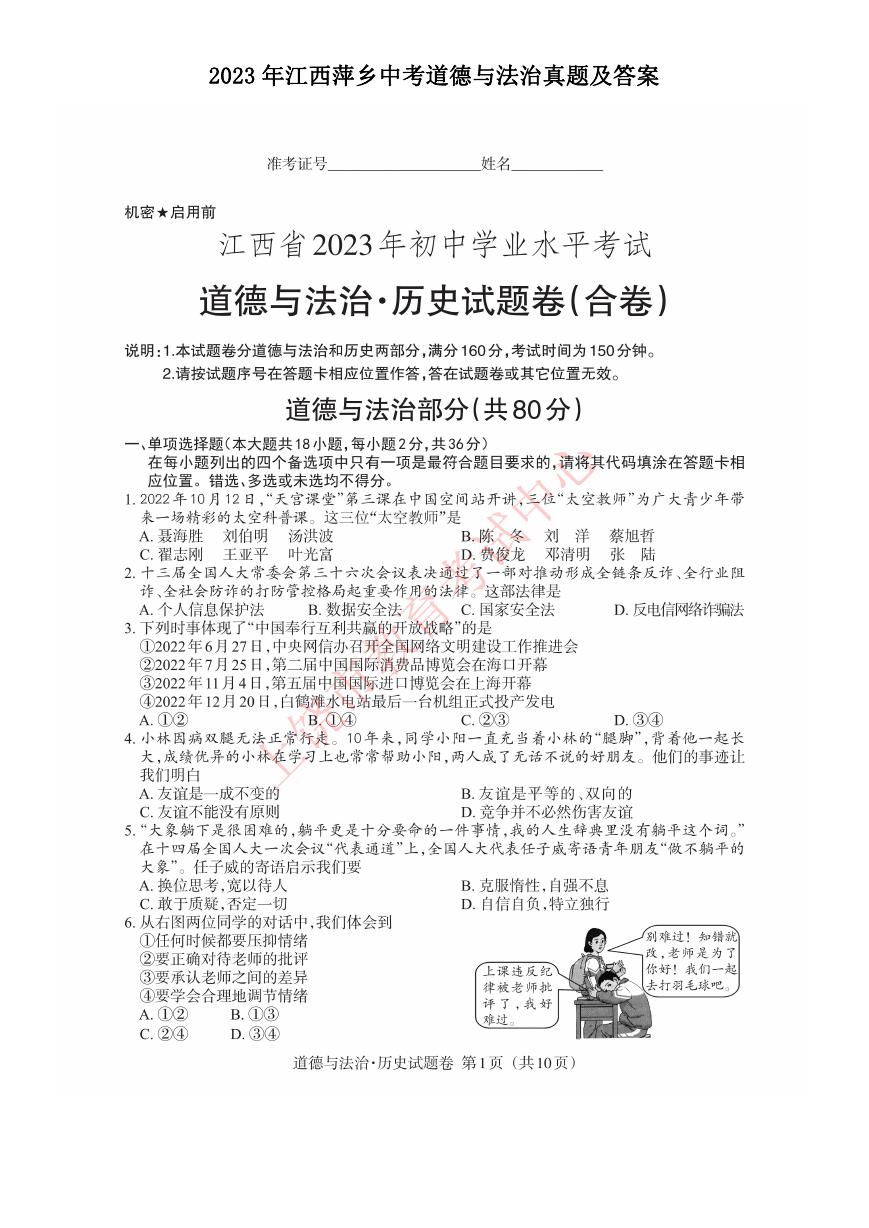 2023年江西萍乡中考道德与法治真题及答案.doc
2023年江西萍乡中考道德与法治真题及答案.doc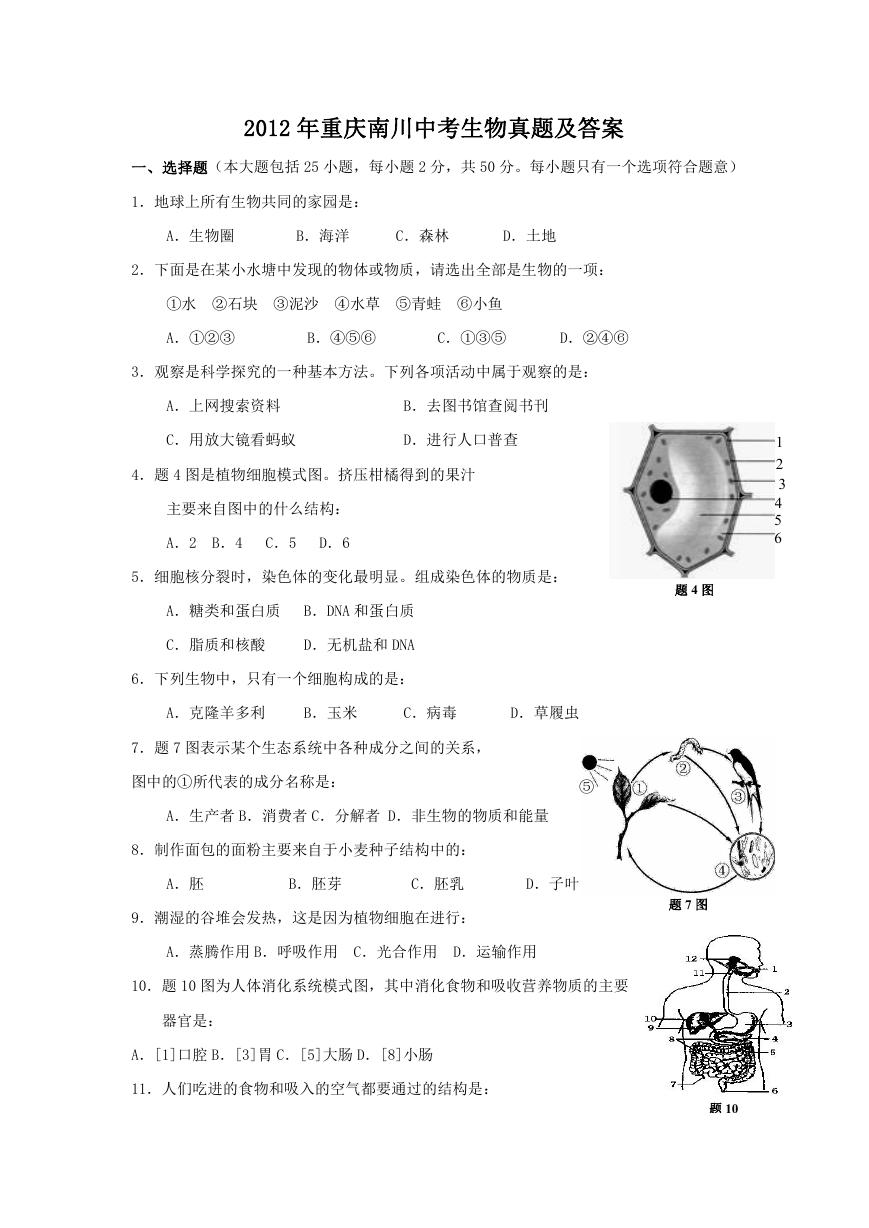 2012年重庆南川中考生物真题及答案.doc
2012年重庆南川中考生物真题及答案.doc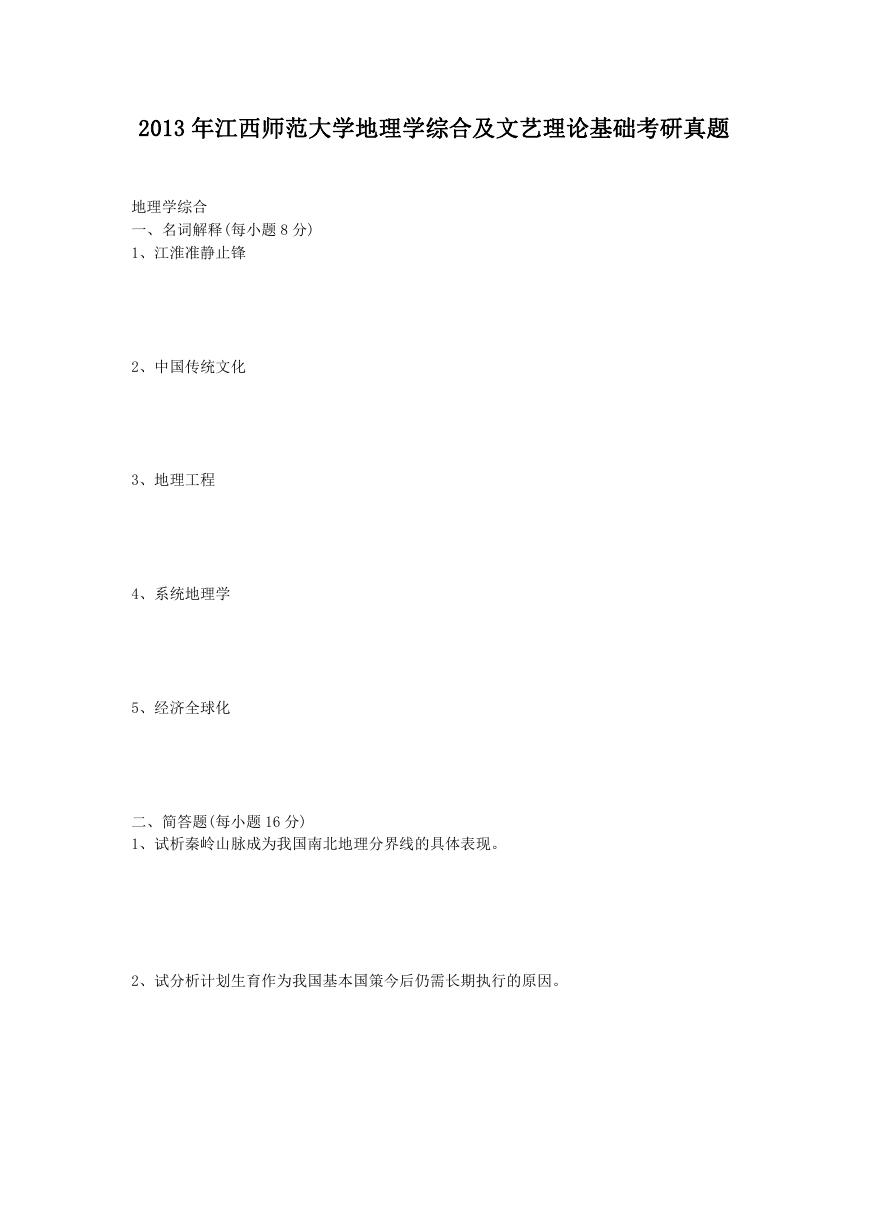 2013年江西师范大学地理学综合及文艺理论基础考研真题.doc
2013年江西师范大学地理学综合及文艺理论基础考研真题.doc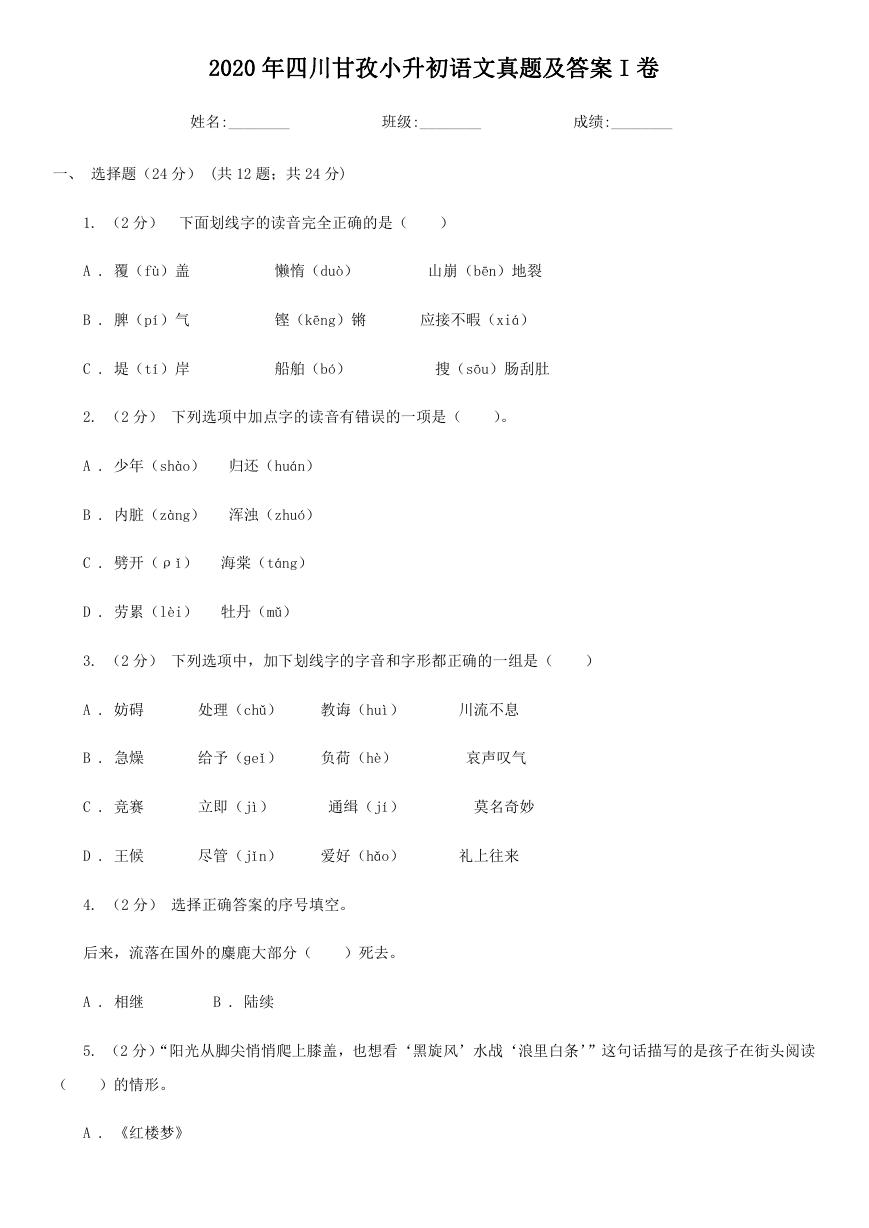 2020年四川甘孜小升初语文真题及答案I卷.doc
2020年四川甘孜小升初语文真题及答案I卷.doc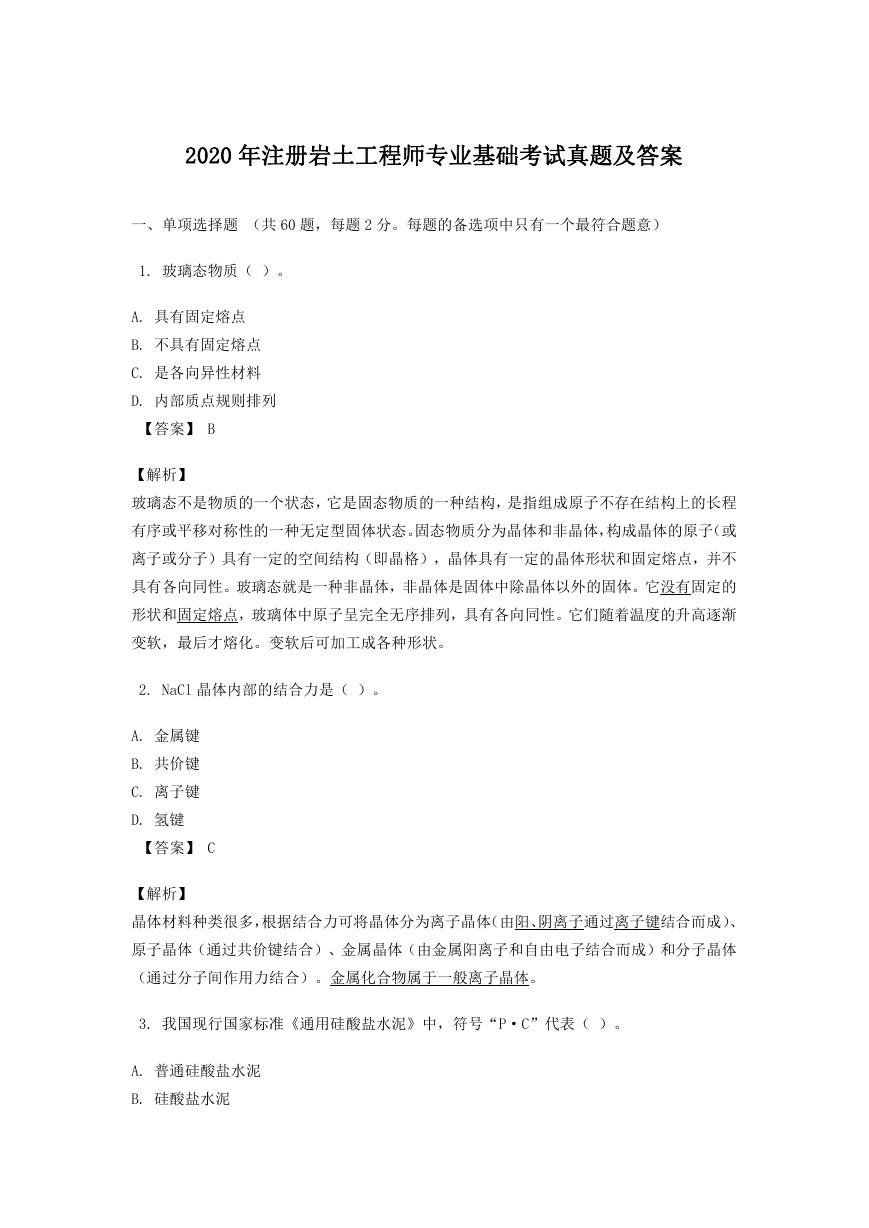 2020年注册岩土工程师专业基础考试真题及答案.doc
2020年注册岩土工程师专业基础考试真题及答案.doc 2023-2024学年福建省厦门市九年级上学期数学月考试题及答案.doc
2023-2024学年福建省厦门市九年级上学期数学月考试题及答案.doc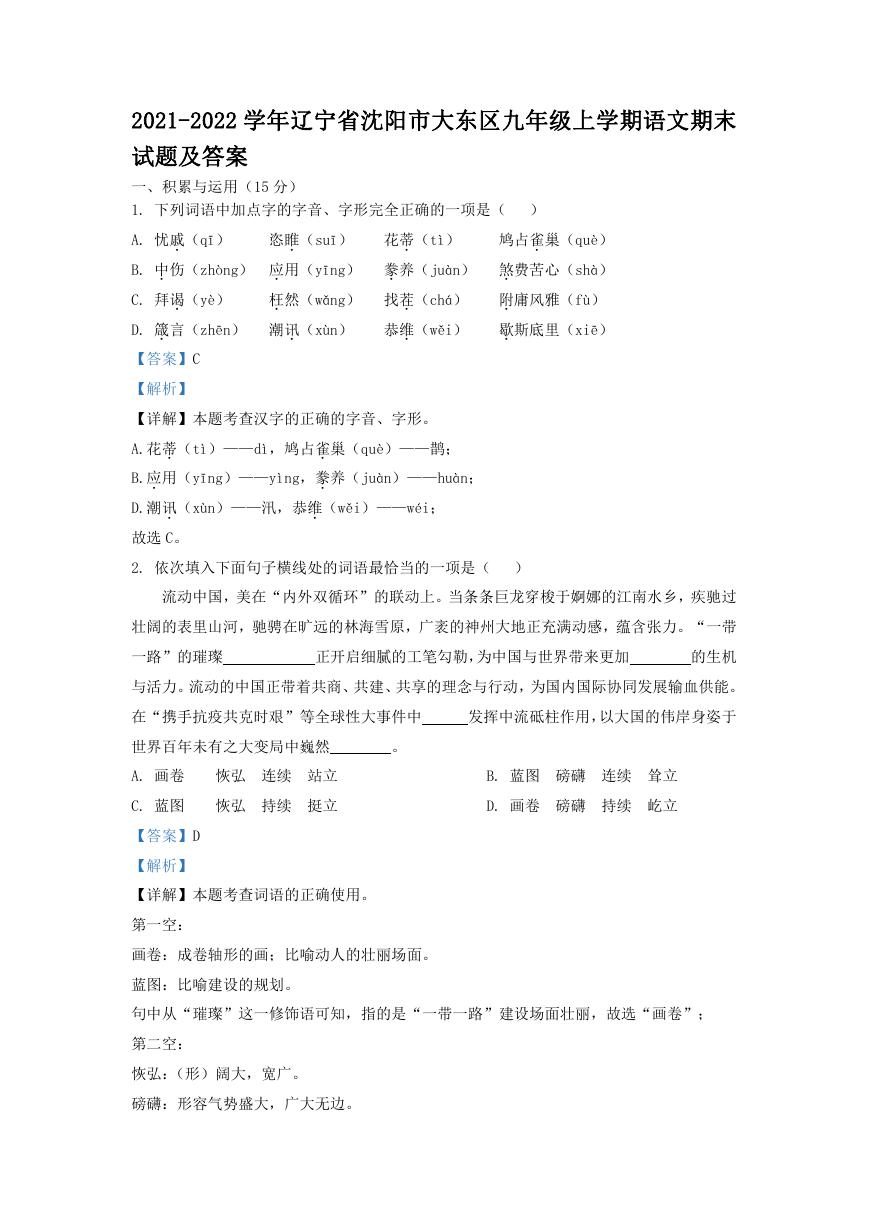 2021-2022学年辽宁省沈阳市大东区九年级上学期语文期末试题及答案.doc
2021-2022学年辽宁省沈阳市大东区九年级上学期语文期末试题及答案.doc 2022-2023学年北京东城区初三第一学期物理期末试卷及答案.doc
2022-2023学年北京东城区初三第一学期物理期末试卷及答案.doc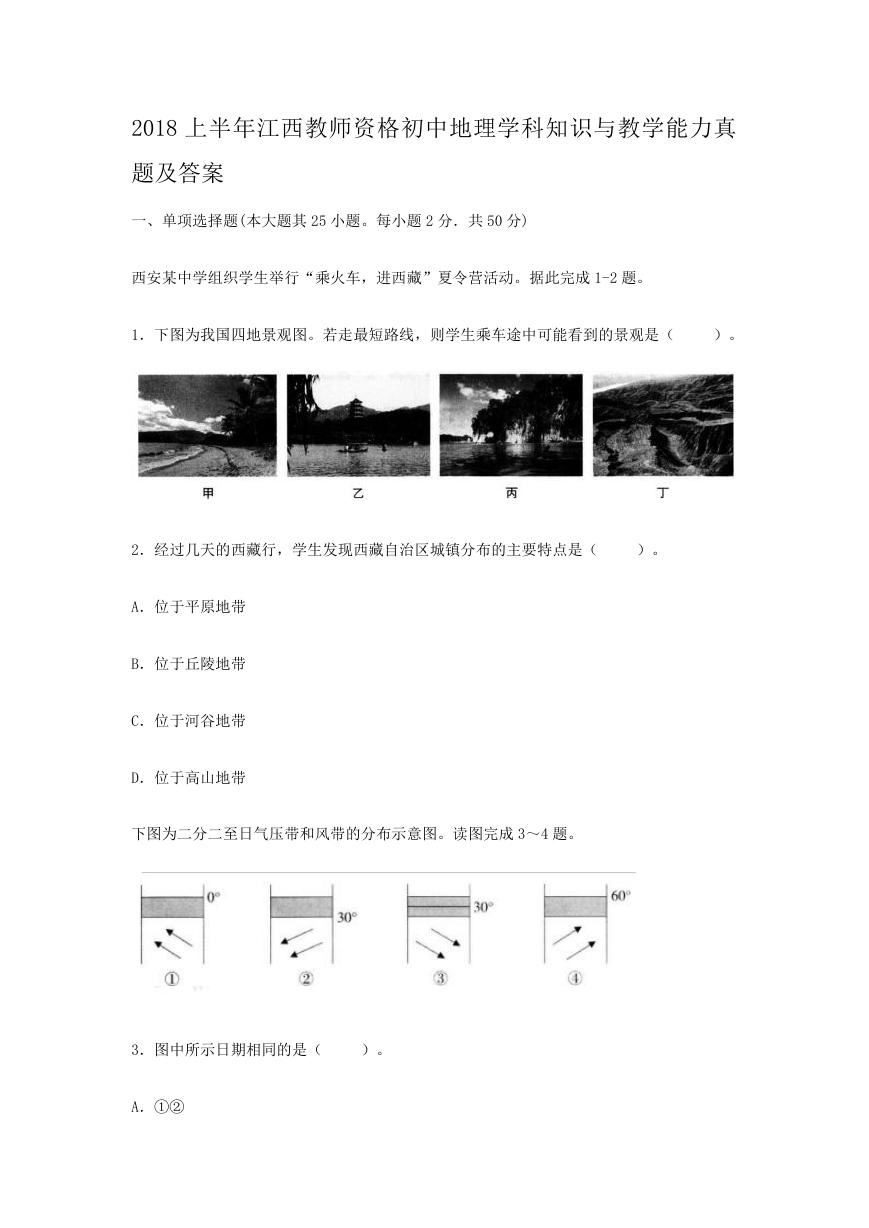 2018上半年江西教师资格初中地理学科知识与教学能力真题及答案.doc
2018上半年江西教师资格初中地理学科知识与教学能力真题及答案.doc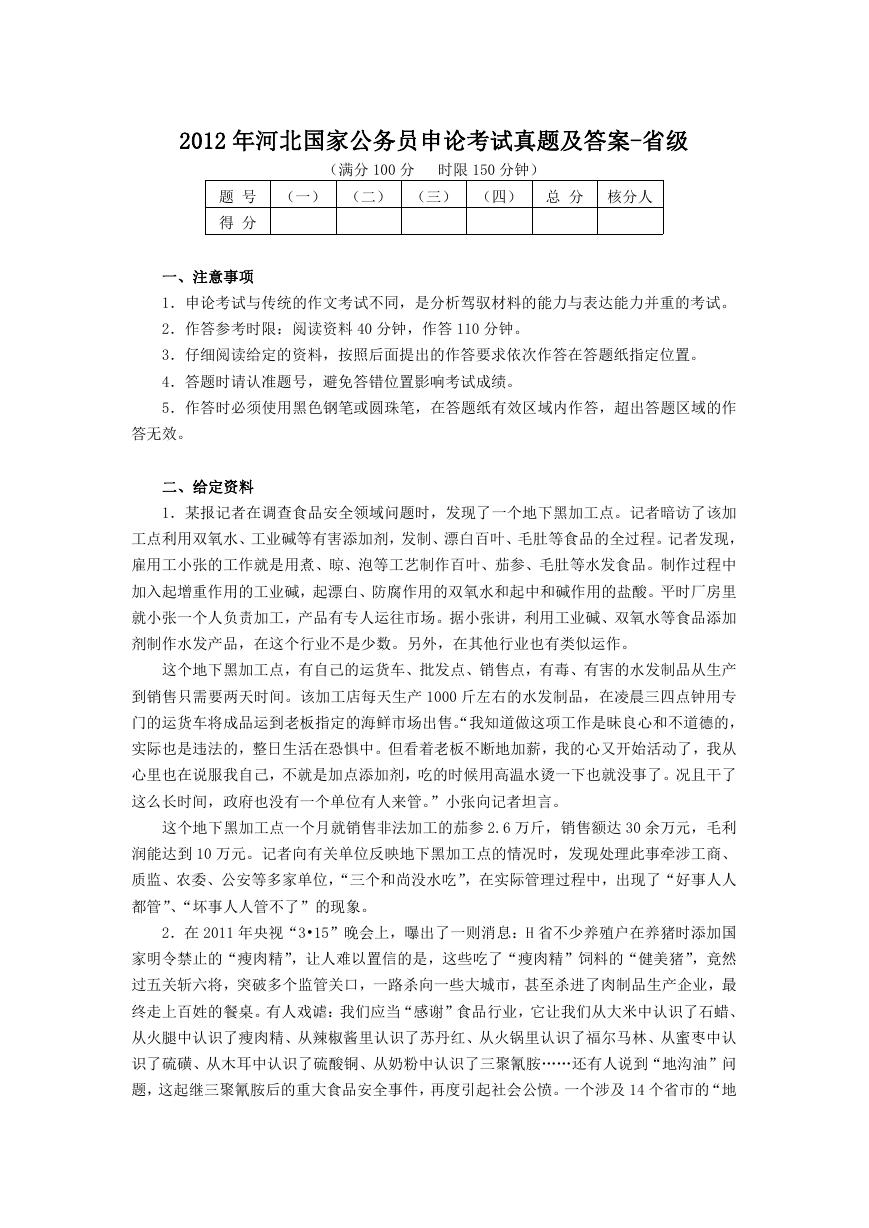 2012年河北国家公务员申论考试真题及答案-省级.doc
2012年河北国家公务员申论考试真题及答案-省级.doc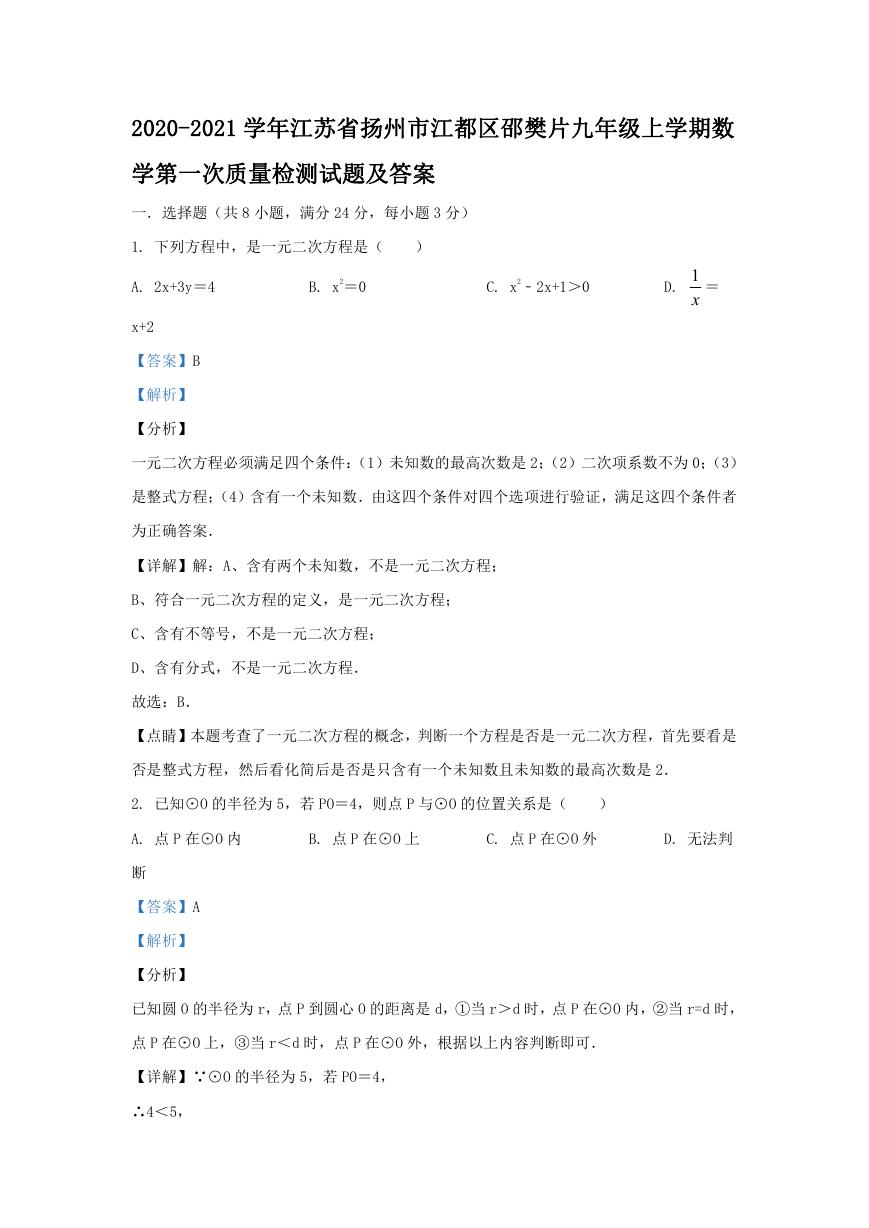 2020-2021学年江苏省扬州市江都区邵樊片九年级上学期数学第一次质量检测试题及答案.doc
2020-2021学年江苏省扬州市江都区邵樊片九年级上学期数学第一次质量检测试题及答案.doc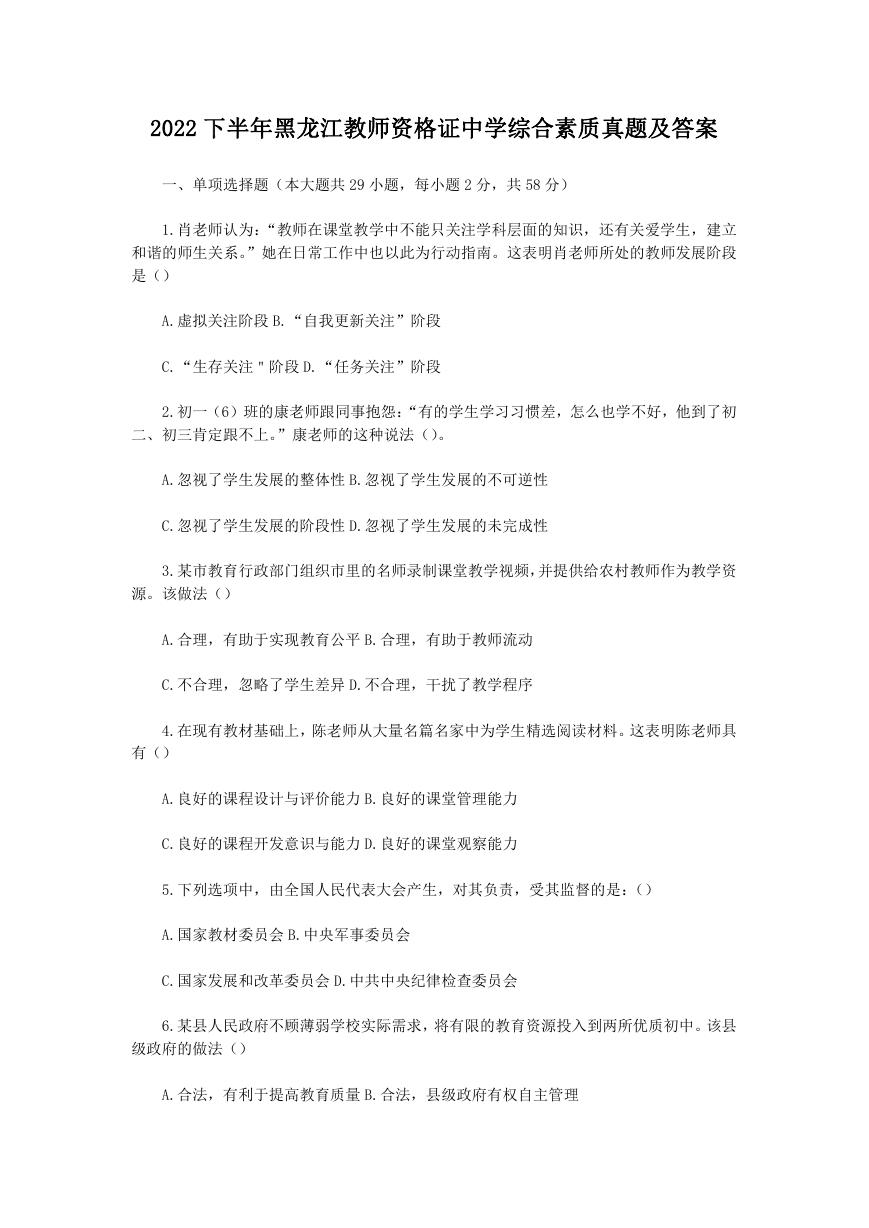 2022下半年黑龙江教师资格证中学综合素质真题及答案.doc
2022下半年黑龙江教师资格证中学综合素质真题及答案.doc